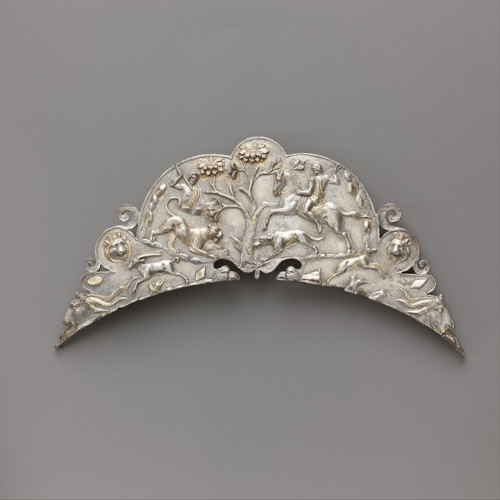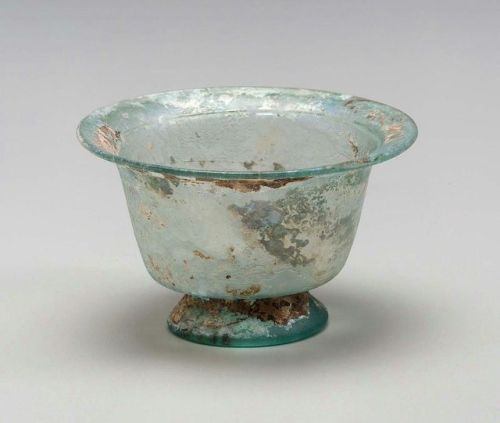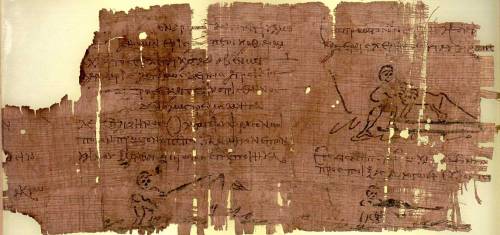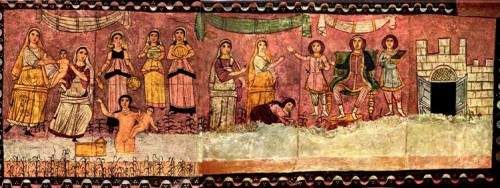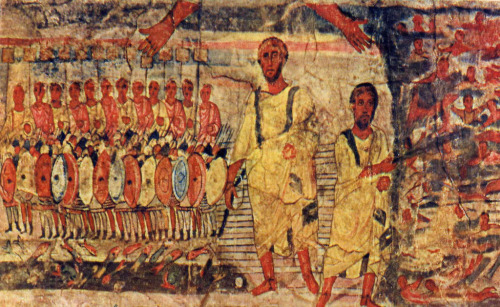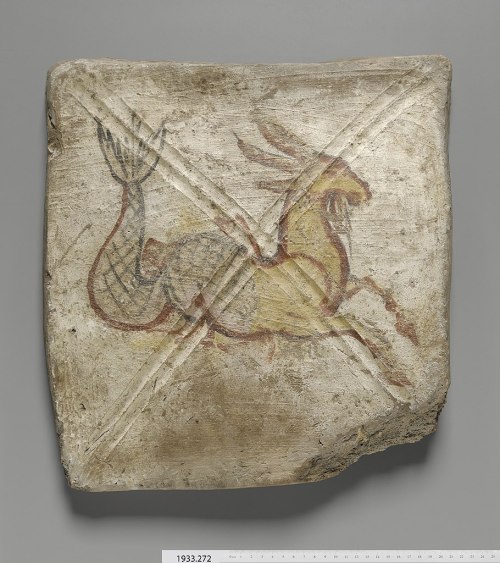#3rd century


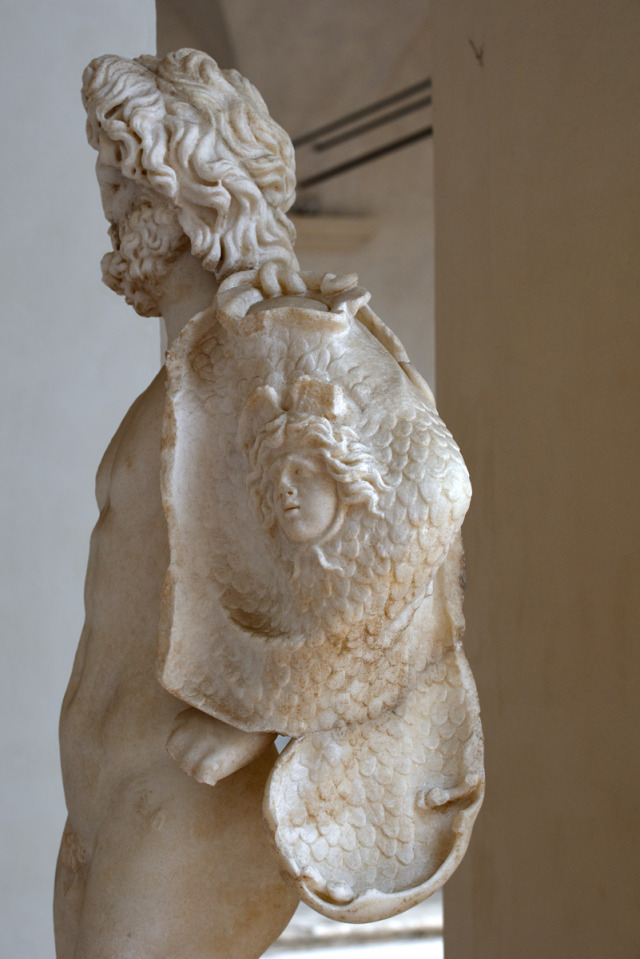
~ Jupiter with the aegis.
Date: A.D. 2nd-3rd century
Medium: Parian marble
Provinience: Rome, Roman National Museum, Baths of Diocletian, Small Cloister of the Certosa (Roma, Museo nazionale romano, Terme di Diocleziano, Chiostro piccolo della Certosa).
TheHeracles Papyrus (Oxford, Sackler Library, Oxyrhynchus Pap. 2331) is a fragment of 3rd centuryGreekmanuscript of a poem about the LaborsofHeracles. It contains three unframed colored line drawings of the first of the Labors, the killing of the Nemean Lion, set within the columns of cursive text. It was found at Oxyrhynchus (Pap. 2331) and is one of the few surviving scraps of classical literary illustration on papyrus. The fragment is 235 by 106 mm.
Post link
Dura Europos synagogue,C. 244AD,
(in contemporary syria), Tempera over plaster.
In order:
-The Torah Niche on the west wall of Dura Europos Synagogue,
-Pharaoh ordering the Midwives to kill all male Hebrew babies and Moses is found by Pharaoh’s Daughter.
*Detail of Pharaoh’s Daughter and Moses
-Exodus: The Israelites leaving Egypt, Moses dividing the waters
*Detail of the left side
Happy Passover!
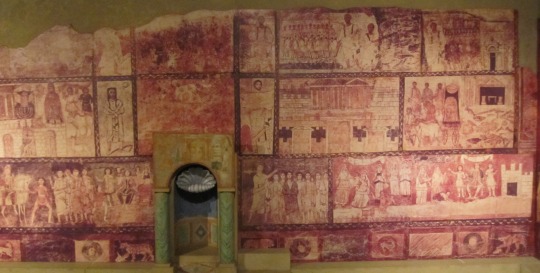
Post link
Tile with Capricorn, Dura-Europos, Syria, ca. 245 AD
Clay with a layer of painted plaster, today at Yale University Art Gallery, 39.5 × 42 × 4.5 cm
Photo: Yale University Art Gallery / public domain
Post link
Standing Female Figurine, Teotihuacan, c.100–200,Saint Louis Art Museum: Arts of Africa, Oceania, and the Americas
Post link
Fighting women of the Germanic tribes
During the expansion of their empire, the Romans sometimes encountered female commanders and female fighters. Some of them belonged to the Germanic tribes. Most accounts depict these women fighting in desperate situations, but they are shown as deadly and uncompromising.
Among these were the Cimbrian women. The Cimbri’s ethnicity is still subject to debate today. Some say that they were Germans, others that they were Celts. They had migrated from FrisiaandJutland and descended toward Italy and several clashes with the Romans followed. In 101 BCE, the Cimbri faced the troops of consul Gaius Marius at Vercellae.
The Cimbrian warriors were defeated, which led the women to take arms, even though the extent of these activities remain unclear. Indeed, according to the account of Florus:
“There was quite as severe a struggle with the women-folk of the barbarians as with the men; for they had formed a barricade of their waggons and carts and, mounting on the top of it, fought with axes and pikes.”
The women sent a delegation to Marius, but failed to secure their freedom. They therefore killed their children and committed suicide. Plutarchgives a slightly different account of the battle, saying that the women fell upon the men who tried to flee and killed them, including their husbands and relatives, and then committed suicide.
Women of the Ambrones , an allied tribe of the Cimbri, displayed the same behavior at Aquae Sextiae. Plutarch gives the following description of the Ambrones’ defeat:
“(…)The Romans kept slaying them until they came in their flight to their camp and waggons. Here the women met them, swords and axes in their hands, and with hideous shrieks of rage tried to drive back fugitives and pursuers alike, the fugitives as traitors, and the pursuers as foes; they mixed themselves up with the combatants, with bare hands tore away the shields of the Romans or grasped their swords, and endured wounds and mutilations, their fierce spirits unvanquished to the end.”
Cassius Dio also writes that during the war with the Marcomanni (166 until 180) the bodies of women wearing armor were found on the battlefield.
TheHistoria Augusta also mentions that during the triumph of Aurelian:
“There were led along also ten women, who, fighting in male attire, had been captured among the Goths after many others had fallen; these a placard declared to be of the race of the Amazons — for placards were borne before all, displaying the names of their nations”.
This last source isn’t, however, a reliable one, so this story must be regarded with some skepticism.
Bibliography:
Cassius Dio, Roman history
Chrystal Paul, Women at war in the classical world
Florus,Epitome
Historia Augusta
Plutarch,Parallel Lives
Post link



